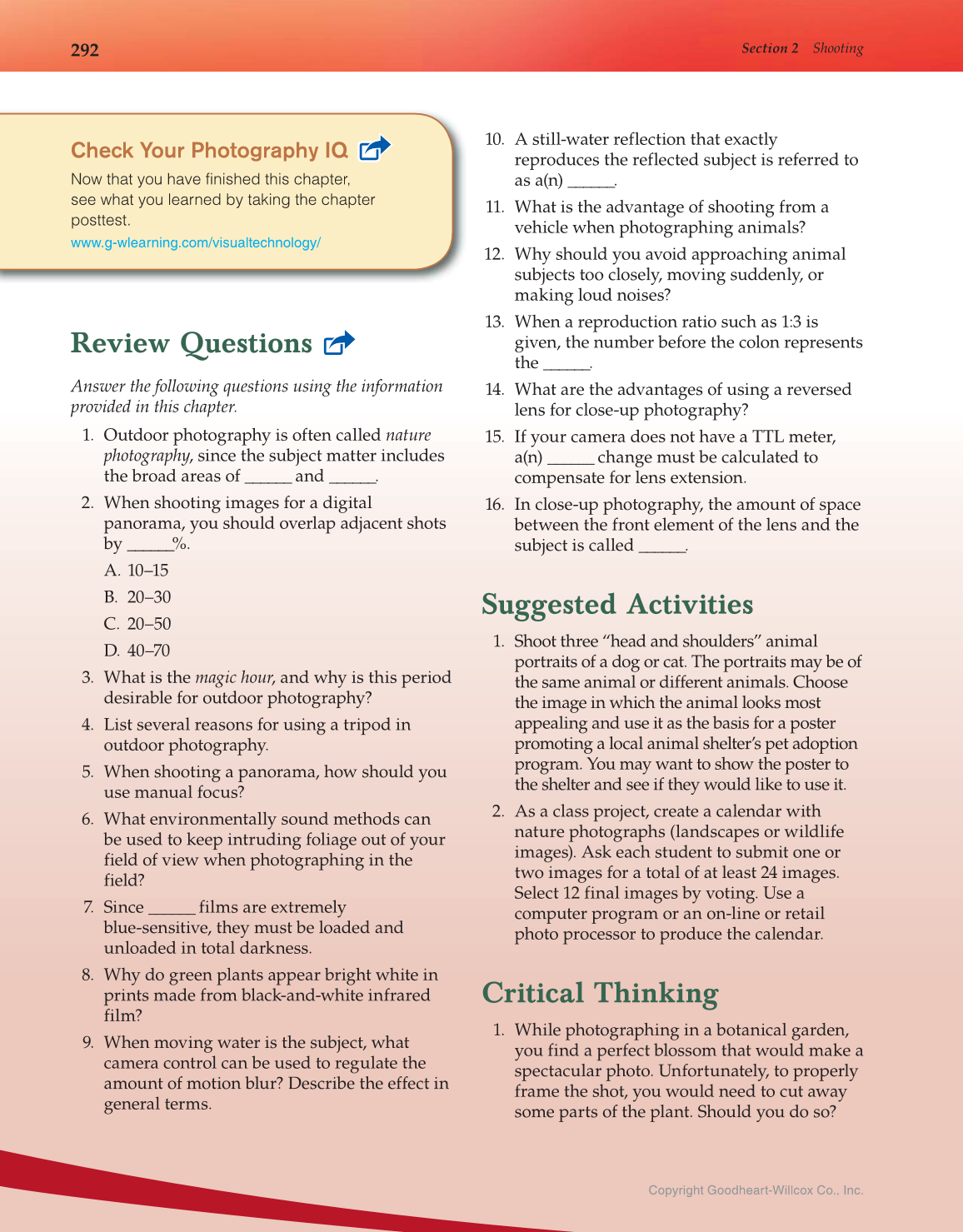Section 2 Shooting
292
Copyright Goodheart-Willcox Co., Inc.
Check Your Photography IQ
Now that you have finished this chapter,
see what you learned by taking the chapter
posttest.
www.g-wlearning.com/visualtechnology/
10. A still-water reflection that exactly
reproduces the reflected subject is referred to
as a(n) ______.
11. What is the advantage of shooting from a
vehicle when photographing animals?
12. Why should you avoid approaching animal
subjects too closely, moving suddenly, or
making loud noises?
13. When a reproduction ratio such as 1:3 is
given, the number before the colon represents
the ______.
14. What are the advantages of using a reversed
lens for close-up photography?
15. If your camera does not have a TTL meter,
a(n) ______ change must be calculated to
compensate for lens extension.
16. In close-up photography, the amount of space
between the front element of the lens and the
subject is called ______.
Suggested Activities
1. Shoot three “head and shoulders” animal
portraits of a dog or cat. The portraits may be of
the same animal or different animals. Choose
the image in which the animal looks most
appealing and use it as the basis for a poster
promoting a local animal shelter’s pet adoption
program. You may want to show the poster to
the shelter and see if they would like to use it.
2. As a class project, create a calendar with
nature photographs (landscapes or wildlife
images). Ask each student to submit one or
two images for a total of at least 24 images.
Select 12 final images by voting. Use a
computer program or an on-line or retail
photo processor to produce the calendar.
Critical Thinking
1. While photographing in a botanical garden,
you find a perfect blossom that would make a
spectacular photo. Unfortunately, to properly
frame the shot, you would need to cut away
some parts of the plant. Should you do so?
Review Questions
Answer the following questions using the information
provided in this chapter.
1. Outdoor photography is often called nature
photography, since the subject matter includes
the broad areas of ______ and ______.
2. When shooting images for a digital
panorama, you should overlap adjacent shots
by ______%.
A. 10–15
B. 20–30
C. 20–50
D. 40–70
3. What is the magic hour, and why is this period
desirable for outdoor photography?
4. List several reasons for using a tripod in
outdoor photography.
5. When shooting a panorama, how should you
use manual focus?
6. What environmentally sound methods can
be used to keep intruding foliage out of your
field of view when photographing in the
field?
7. Since ______ films are extremely
blue-sensitive, they must be loaded and
unloaded in total darkness.
8. Why do green plants appear bright white in
prints made from black-and-white infrared
film?
9. When moving water is the subject, what
camera control can be used to regulate the
amount of motion blur? Describe the effect in
general terms.
